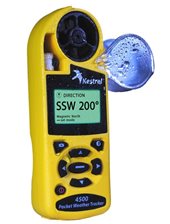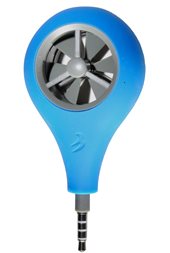The first project for an anemometer was carried out by Leon Battista Alberti in 1450, but Leonardo da Vinci also subsequently engineered one equipped with an anemometer as well as an anemoscope, ie measuring the direction of the wind.
The most common anemometers are those with vane, inserted on a wheel, which with the pressure of the wind turn and send electrical impulses that, in the most current models, are digitized to be sent as data to the display.
There are portable anemometers and anemometers inserted in the weather station.
Today, the most common are portable anemometers, which are often equipped with other measurements (temperature, humidity, altitude, wind direction, etc.), thus also becoming true weather stations.
In 2013/2014 the first portable anemometers for smartphones appeared, an example is the Wind Meter of WeatherFlow. These offer the peculiarity of monitoring data on a more performing display and of being able to better send measurement reports to friends via SMS, email and Social Network. They also normally have a lower cost, as the wind sensor does not incorporate a display.
For high level measurements, anemometers with ultrasound detection have appeared a few years ago, an example is the UWSD10 of CruzPro. These are expected to be more precise and are therefore intended for professional users or racing sailboats.
Today, an anemometer is a fundamental tool for many types of activities, to name but a few:
- Nautical
- Sailing regattas
- Windsurfing and kitesurfing
- Flight
- Building
- Inflatable systems
- Gardening
- Athletics
- Diving
- Ski
- Motorcycling
- Hunting
- In the medical field


